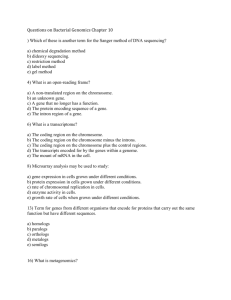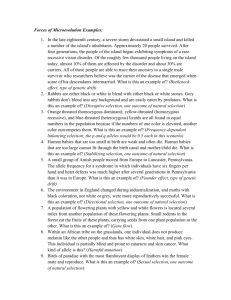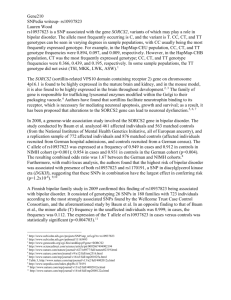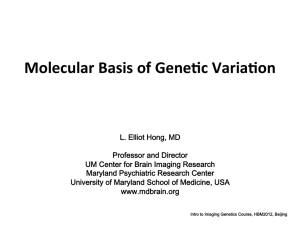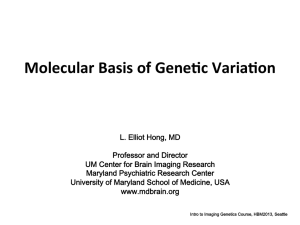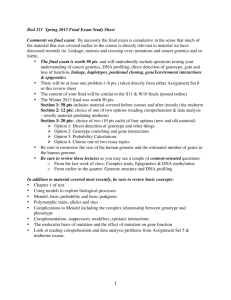appendix
advertisement
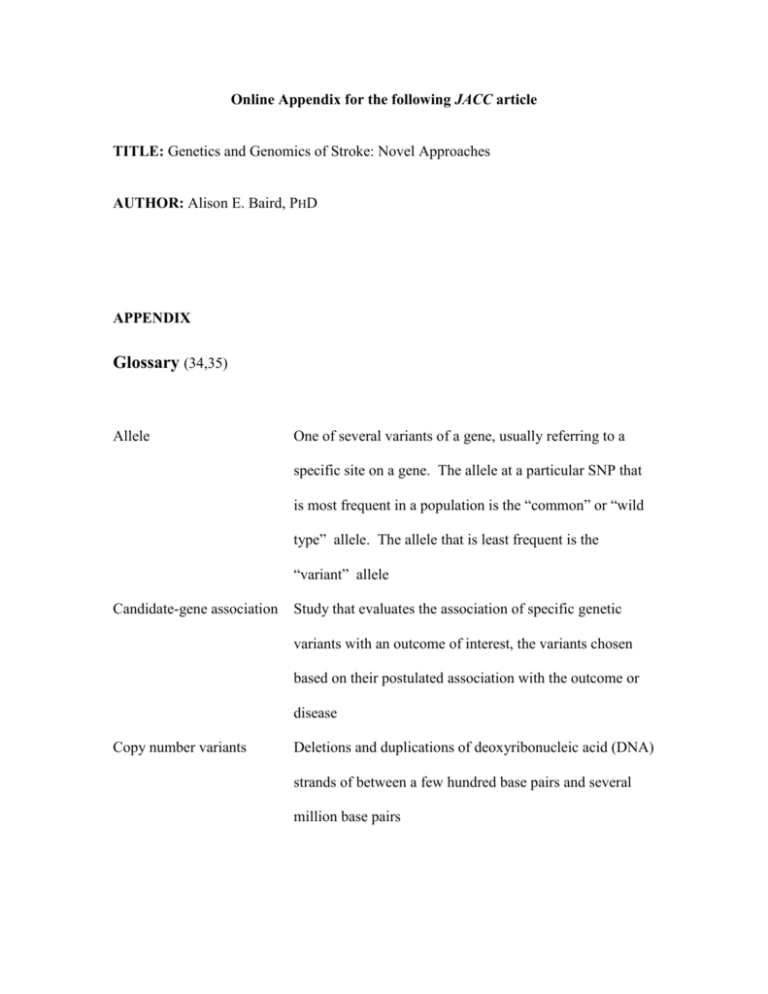
Online Appendix for the following JACC article TITLE: Genetics and Genomics of Stroke: Novel Approaches AUTHOR: Alison E. Baird, PHD APPENDIX Glossary (34,35) Allele One of several variants of a gene, usually referring to a specific site on a gene. The allele at a particular SNP that is most frequent in a population is the “common” or “wild type” allele. The allele that is least frequent is the “variant” allele Candidate-gene association Study that evaluates the association of specific genetic variants with an outcome of interest, the variants chosen based on their postulated association with the outcome or disease Copy number variants Deletions and duplications of deoxyribonucleic acid (DNA) strands of between a few hundred base pairs and several million base pairs Exon A sequence of DNA that codes information for protein synthesis that is transcribed to messenger ribonucleic acid (RNA) Gene The unit of hereditary material (DNA) that causes a particular phenotype (generally assumed to be caused by a protein) Genetics The study of inheritance, the way traits are passed from one generation to another Genome-wide association Study that evaluates associations of genetic variation with outcomes or traits of interest by using 100,000 to 1,000,000 or more markers across the genome Genomics The study of the whole genome and the interaction among those genes and the environment Haplotype Pattern of consecutive allelic variations on each of the chromosomes; single nucleotide polymorphisms in close proximity mean that some alleles tend to occur together on the same chromosome and may be inherited together Linkage Occurs when particular genetic loci or alleles for genes are inherited jointly because they occur on the same chromosome Locus The site on a chromosome at which the gene for a particular trait is located, or on a gene at which a particular SNP is located Metabolomics The study of the full set of metabolites encoded by a genome Missense mutation Genetic change involving the substitution of one base in the DNA for another which results in the substitution of one amino acid for another Mutation A rare variant in a gene, occurring in <1% of the population (cf polymorphism) Polymorphism The existence of two or more variants of a gene, with the less common variant occurring with at least 1% frequency in the population (cf mutation); types include single nucleotide polymorphism (most common type), insertion, deletion, and tandem repeat PAR Population attributable risk: the reduction in disease incidence that would be observed if a population was entirely unexposed to a risk factor, compared with its current (actual) exposure pattern Proteomics The study of the full set of proteins encoded by a genome SNP Single nucleotide polymorphism: variation at a single base pair location, compared with the “common” or “wild-type” sequence

